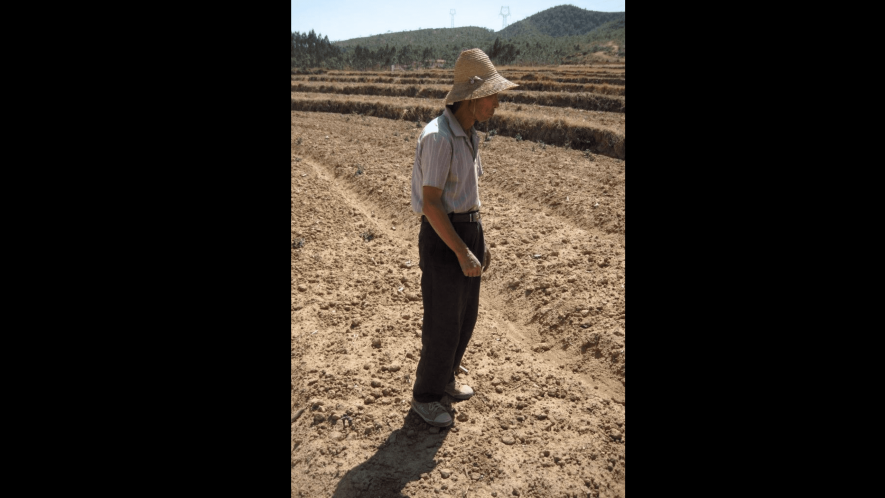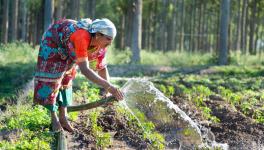China Faces Unprecedented Heat Waves, Drought; Major Impact on Farming, Electricity

Image Courtesy: Flickr. Representational Image.
New Delhi: China is currently facing severe weather conditions, which are likely to take a toll on the food production economy of the country. Record-breaking heat and low rainfall are impacting people, industry and agriculture in the country.
Along with long spells of heat, the rainfall shortage has led to the depletion of water levels in rivers and reservoirs, which in turn caused an electricity crisis. Many industries have to shut down because of electricity shortage and huge areas of croplands are getting damaged. Experts are concerned about a worldwide repercussion of the situation in China as this could lead to disruption in the supply chain and a global food crisis.
China is facing a highly concerning situation—extreme heat for around two months, with hundreds of places in the country recording temperatures beyond 40 degrees Celsius. Subways have been turned into makeshift rest stations where people can recover from the heat. On August 18, Chongqing in the Sichuan province experienced temperatures as high as 45 degrees Celsius. According to CGTN, it was the most severe hot spell in Chongqing since 1961. On August 20, Chongqing witnessed a minimum temperature of 34.9 degrees Celsius, which is the highest minimum temperature that has been recorded ever in the month of August.
Maximiliano Herrera, a weather historian who studies the extreme temperatures around the world, said, “It is the most severe heatwave recorded anywhere.” He added, “This combines the most extreme intensity with the most extreme length with an incredibly huge area all at the same time. There is nothing in world climatic history which is even minimally comparable to what is happening in China.”
On August 19, the Chinese government announced a national drought for the first time in nine years.
Coupled with the sustained spells of extreme heat, low rainfalls in several parts of the country led to another worrying situation wherein rivers are falling to low levels. Reports say 66 rivers have dried up completely. A report published in The Guardian on August 22 says that Yangtze, the world’s third largest river, is seeing many of its tributaries drying up and the water flow in the main trunk is more than 50% below the average over the last five years. This has caused a massive shortage in hydropower. In fact, parts of Yangtze have seen water depleting to a level that is the lowest since records began back in 1865.
According to the Guardian, drought has so far impacted around 2.46 million people and 2.2m hectares of agricultural land in Sichuan, Hebei, Hunan, Jiangxi, Anhui and Chongqing. Further, over 780,000 people needed direct government support because of the drought, according to China’s ministry of emergency management, the report said.
The Sichuan province appears to be the worst affected as 80% of its electricity requirement is acquired from hydropower. This has led to thousands of factories in the province being shut down, along with offices and shopping malls, in order to save power.
It is not only the electricity shortage that has affected China; a deepening food crisis is also underway as large areas of croplands are getting dried up. In Sichuan alone, some 47,000 hectares of crops are damaged. The agriculture ministry of China said that it will undertake cloud seeding to cause artificial rain to rescue the crops.
China is not alone; other regions of the world have witnessed similar situations this year. Europe, on the other side of the globe, is seeing droughts that are the worst in the last 500 years. The Global Drought Observatory’s latest report suggests that 47% of Europe is under warning conditions, which means the soils have dried up along with another 17% being on alert, meaning vegetation is under stress. The report has the warning message that the droughts can persist for several months in some parts of Southern Europe. The Horn of Africa is also witnessing droughts, and so are the US and Mexico.
The IPCC (Inter-Governmental Panel on Climate Change), in its sixth assessment report in 2021, warned that global warming due to man-made climate change will increase droughts with more frequency and more intensity.
Get the latest reports & analysis with people's perspective on Protests, movements & deep analytical videos, discussions of the current affairs in your Telegram app. Subscribe to NewsClick's Telegram channel & get Real-Time updates on stories, as they get published on our website.
























